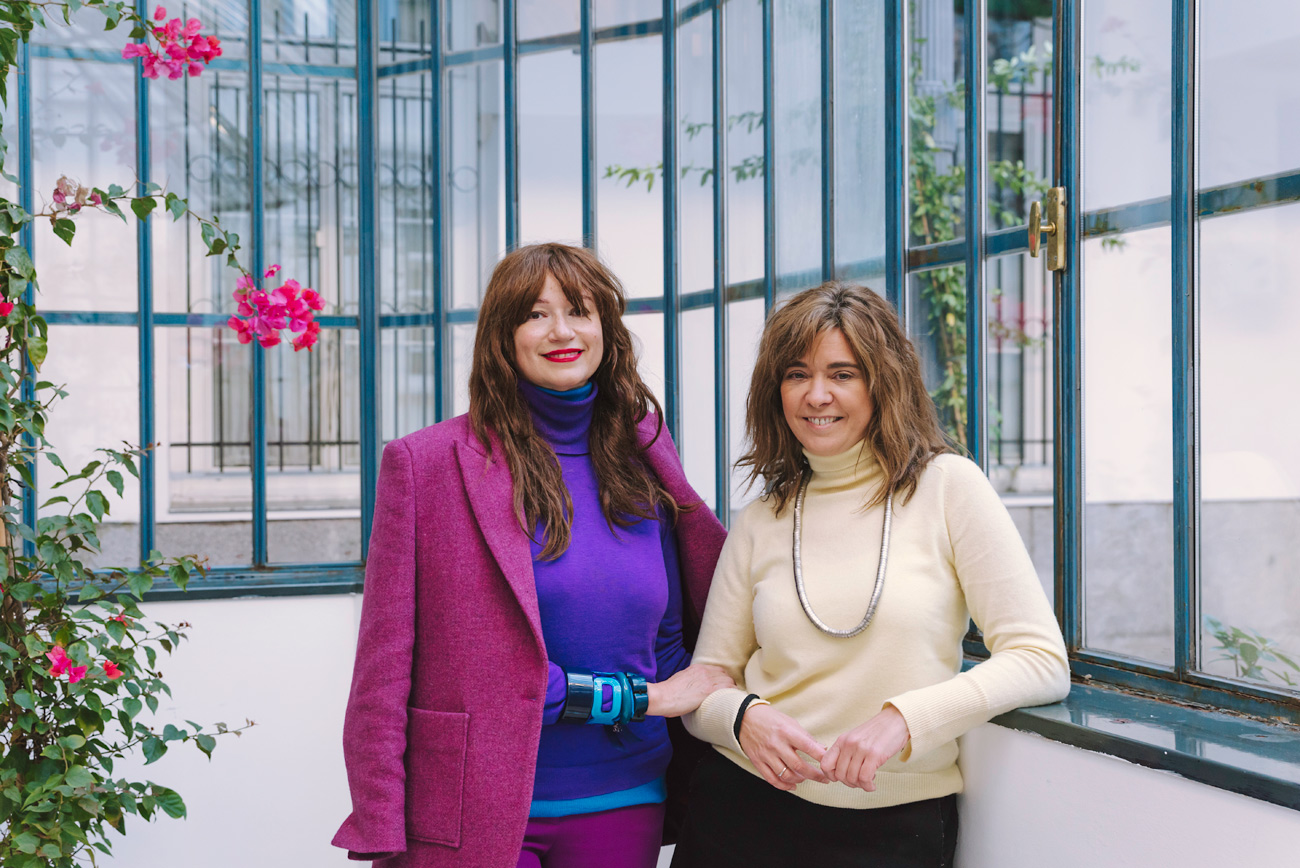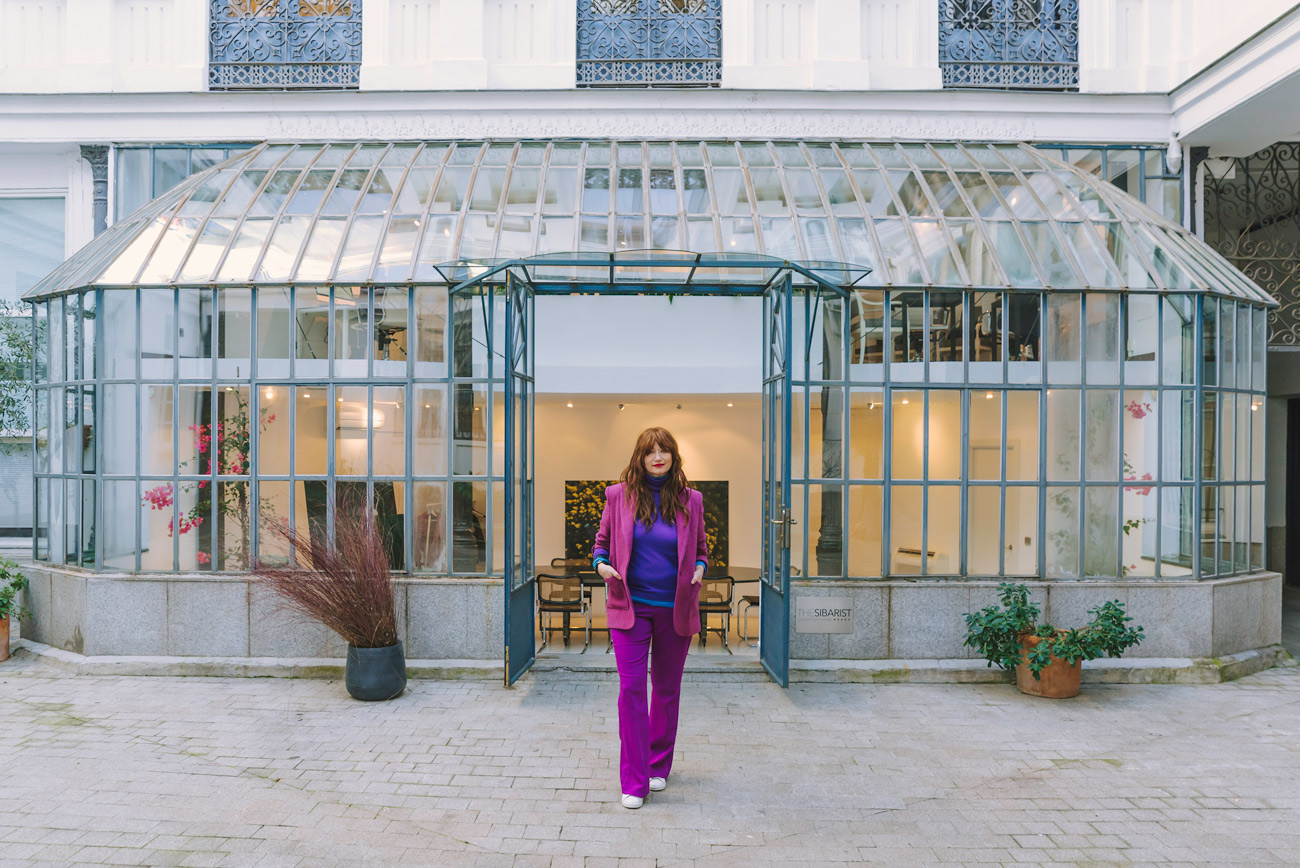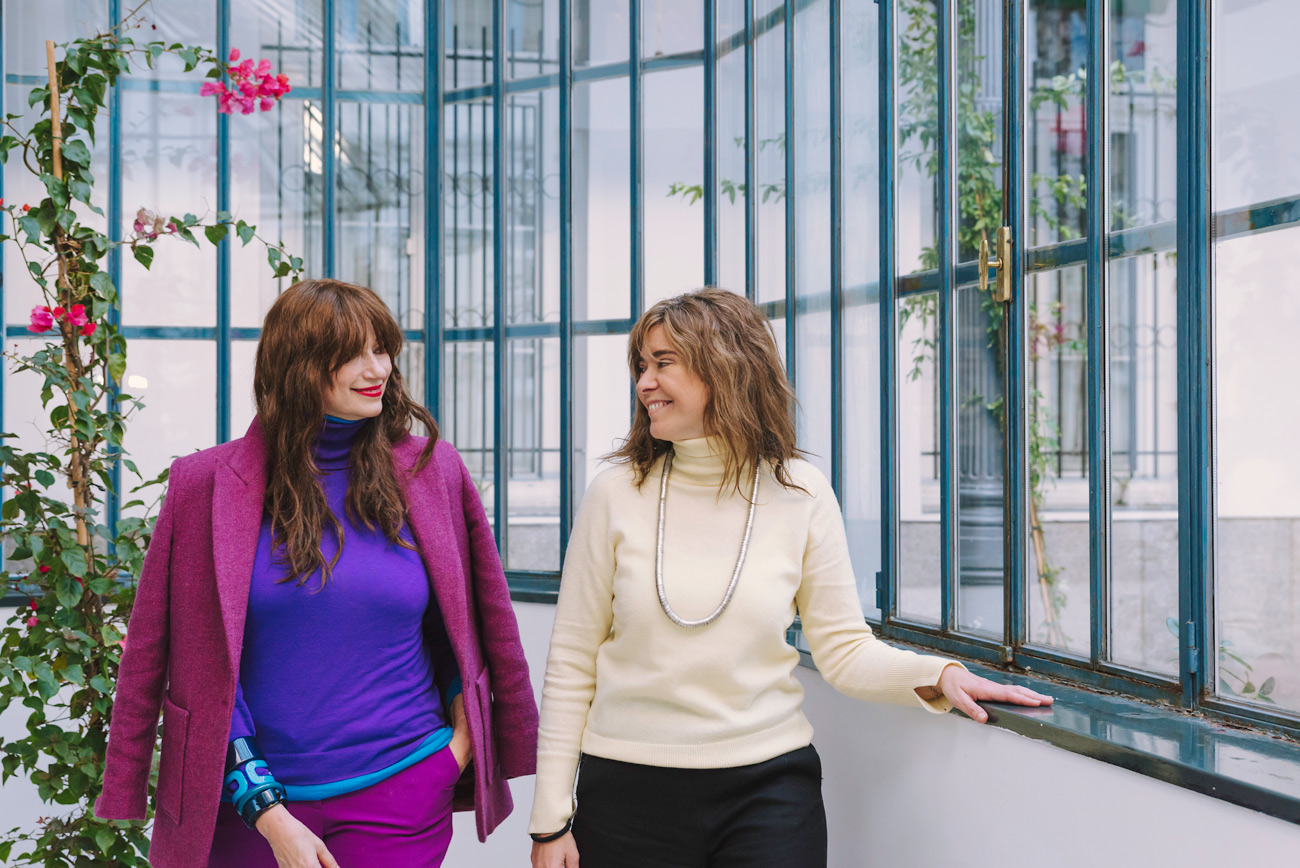We talk with Marisa Santamaría about innovation and design
Marisa Santamaría is an essential figure in the world of design for countless reasons. She is an explorer of innovation through design. You could say that she carries a Swiss precision compass in her pocket that indicates where trends in design, architecture, lifestyle and contemporary movements live and where they are heading.

Marisa Santamaría is a point of reference in our country in the field of design. She specialises in research and analysis of the currents that emerge globally in all fields of creation involved in the introduction of novelties and in the participation of talents that have just appeared and are weaving the future of international design.
She has a prodigious way of seeing the world from a privileged vantage point because she directs her gaze from five lighthouse-like enclaves that, in reality, constitute her lines of work. She is defined as a trend analyst and her research is based on several pillars: on the one hand, she produces trend reports for various entities, on the other, she teaches at the Politecnico di Milano, at the Instituto de Empresa and at IADE, writes for various media and works with companies to try to transfer knowledge to society and communicate what is being done to improve people’s lives. All these activities introduce her as an analyst to inexhaustible sources of new perspectives that show signs of change.
You know the world of design or architecture from the inside, you visit factories, you teach in schools or business centres, where is design heading?
Design is no longer just about creating another object or space, but about generating solutions for contemporary life. As it changes its codes very quickly, what we face in the 21st century is the challenge of permanent change, as opposed to 20th century schemes when life was more linear.
The speed at which our circumstances and the objects around us change today, through technology or craftsmanship or innovation, is enormous. And, for me, the core of it all is in design, today it is more a way of thinking, to put it in more academic terms, it is a way of optimising resources to achieve efficiency, without ever forgetting beauty.
How has the pandemic affected the way we design and how does it reach the end user?
I think that the human being has such an important connotation that he always seeks to achieve the sublime, that which elevates the spirit, which is very important, and even more so in these times. With the arrival of the pandemic the changes have intensified, a more intense search for the human factor has emerged. The first push has been lost a little, but something very important has remained in us, the idea of uncertainty. The changes that have been taking place in recent years have accelerated.
How do you think this translates into the domestic environment?
With regard to the interiors we inhabit, we have realised the importance of our shelter, whatever it is, a humble house or a shared one. It used to be a place to pass through, especially in Spain, compared to other less warm countries where it is a refuge from the weather. However, I think that in our country it has been a very important moment to rediscover the objects that accompany us in life, it is important that they have quality and fit the way we are, according to our way of life.
What has changed the most in this newly rediscovered shelter?
For example, the lighting, we have realised that it is not just a matter of clicking and the light comes on. Because we have wonderful natural light in Spain, perhaps historically we have had less sensitivity in lighting design. In reality, we needed one light to concentrate, to work at home, one light to rest, to relax or to read, and a different light for cooking. There is a spectrum of light modulation that is very interesting and that perception makes us see lamps in a different way. It is not just an object that accompanies us, whether it is switched on or off, but one that provides solutions and quality of life, as well as health.
Do you believe that spaces have the quality of caring for the human being?
Materials, surfaces, textiles, objects and furniture…, which accompany us in our daily lives, also bring us something else. Each person builds their own universe and I don’t believe in interior design, decoration or standard interior design, each person builds their own world, their own nest.
The Centro del Carmen de Cultura Contemporánea de Valencia is currently showing the exhibition ‘Escenarios de un futuro cercano’ (Scenarios of a near future) which shows what the home of the future will be like. Do you think that as a society we are prepared to face changes such as flexibility, modularity, sustainability or nomadism?
Great exhibition curated by Tachi Mora.
We are already involved in the changes you point out. In this line, right now in the Pavillon de l’Arsenal exhibition space in Paris there is an exhibition with 20 projects about the current renovation of buildings in the city. All include co-living and co-working, projects developed by Bjarke Ingels, Lacaton and Vassal, Jean Nouvel, all propose the renewal of the city and take into account collaborative living, more community and exchange of spaces. Public libraries are full and have become free co-working spaces, like hotels, also full of people working. And this is happening in every country in the world, from New York to Milan.
How do you see this reality applied to the real estate world as a very good proposal for investors and a solution for large properties?
It is a very topical issue and, in this sense, for years the Massachusetts Institute of Technology (MIT) has developed very clear technological breakthrough studies, in which, for example, a kitchen equipped with all the technological advances can lower the ceiling with a single finger or turn on and modulate the light in an intuitive way, depending on the time of day. These technological advances also mean that we are adapting to new areas of life. I find paradigmatic the Vitápolis coliving, a senior living room by the Romero & Vallejo architecture studio in Toledo, which has won many awards. Spain is one of the most advanced countries in this area and The Sibartist is one of the pioneers in houses and spaces that take care of you and are collaborative and that also take into account all the architectural and design circumstances, so that they are really proactive and generate a benefit for the people who live there.

How is the new concept of the city being built?
We are moving towards a new evolution in which design is a central axis of transformation.
The new architecture is focused on rehabilitation and allows us to live in a different way, building less and giving the city a different meaning, greener, more connected, more inclusive.
Is there a theme that is a constant in your research?
Always keeping design in mind, it is important to analyse social and cultural changes, positive and negative globalisation. Strategic design as a catalyst for change in the 21st century. The visibility of women and their equal position in the workplace. Evolution of all areas of design connected.
You have just arrived from Paris, where you presented the winners of the Rising Talent Awards at Maison & Objet, and you have commented that Spain in many areas is moving faster, how do you see the state of design in our country?
Spain is a spectacular focus of creativity, with a core of very diverse designers and companies.
There is no idea of a common identity; designers develop their careers from Barcelona, Valencia and Madrid, but also from rural areas. There is Andreu Carulla from Banyoles, Ramón Soler from Loja, RCR from Olot or Inés RIR from a village in Galicia. I am creating a map ‘Atlas de la cultura del diseño en España’ with the Ministry of Culture and MDF, which is a constantly evolving project that reflects the changing reality of the 21st century context and its interaction with Spanish society and culture, through design.
In this who’s who, is there anything in common?
Our history of design is very recent because it was in the 80s when there began to be cultural revolutions that led directly to the design of the 90s, with Barcelona and the Olympics. Then, in the 21st century, the key moment came in 2008, precisely coinciding with a major economic crisis, and a very interesting revolution began that continues today. It is distinguished by less industrial production, serial editions or self-production, and that is where design is moving, between big industry, which is adapting to the current moment, and designers who are self-producing or generating small series that they produce directly or in collaboration with companies.
Is there something of globalisation in design right now in the pejorative sense of the term?
Globalisation can have a positive perspective, the one that focuses on the crossing of ideas and projects. I experience this with my students, who come from more than ninety different countries.
Another word with negative overtones is gentrification, what do you think, does it have something to do with design?
Cities have to evolve, for example, in Madrid, right now the Carabanchel neighbourhood is the place where, as in all cities, creative nuclei have been generated that favour the progressive evolution of the city. To understand the city as a watertight compartment is impossible, it is the anti-definition of the city. People colonise cities which, the more permeable they are and the greater the crossroads of cultures, the richer they will be.
How do you see the role of women in the world of industrial design right now, both in terms of their position in positions of relevance in the most important companies in this sector and in terms of creation and training?
The changes have been decisive. Women have been relegated to housework, to the domestic space, if we think about it, they were purely strategic designers, creators of processes and spaces that improved people’s lives, this vision should not be underestimated, without forgetting other opportunities for professional growth.
Women designers and architects are living a very enriching moment, although they are always less visible, not only systematically, but even we ourselves are not inclined to let people see what we do.
In line with this idea, tell us about the group exhibition ‘Woman X Woman: new sustainable transits’, which situates design from a new feminine perspective and which you have curated for the gallery _2B space to be, of the architecture and design studio Moneo Brock.
This exhibition is a project I did in 2019, also for Moneo Brock, and in this second part, with twice as many selected women, the concept of systematic sustainability is introduced into the design process. It brings together 15 prominent women in the field of design, craftsmanship and architecture, who exhibit pieces and projects representative of a turning point or transition in their career, a moment of evolution towards another creative dimension, where sustainability starts from the same experimental and investigative beginning.
You have recently commented that artisans are “mobilisers who amplify, remove and prescribe”, do you think that a more environmentally friendly future lies in their hands and that through their knowledge and values for natural materials another environment is possible?
The boom towards craftsmanship is related to the search for our roots and to a tension between high technology, in which we are undoubtedly immersed, and craftsmanship. We need the handmade around us, because it brings us serenity and health in this contemporary world, the tendency is that there will always be a confluence between technology and the human side.
You believe that the new generations are examples to follow, but who are your role models?
We have many role models who in themselves are a lesson in life, and for me the artist Louise Bourgeois, the Nobel prize-winning neurologist Rita Levi-Montalcini, the philosopher Martha Nussbaum and the Dutch researcher Lidewij Edelkoort are undoubtedly the ones who stand out.
Editor: Beatriz Fabián Brihuega.
Photographer: Nieves Díaz de Work Shooting.
Assistant photographer: José Antonio Gil Sánchez
